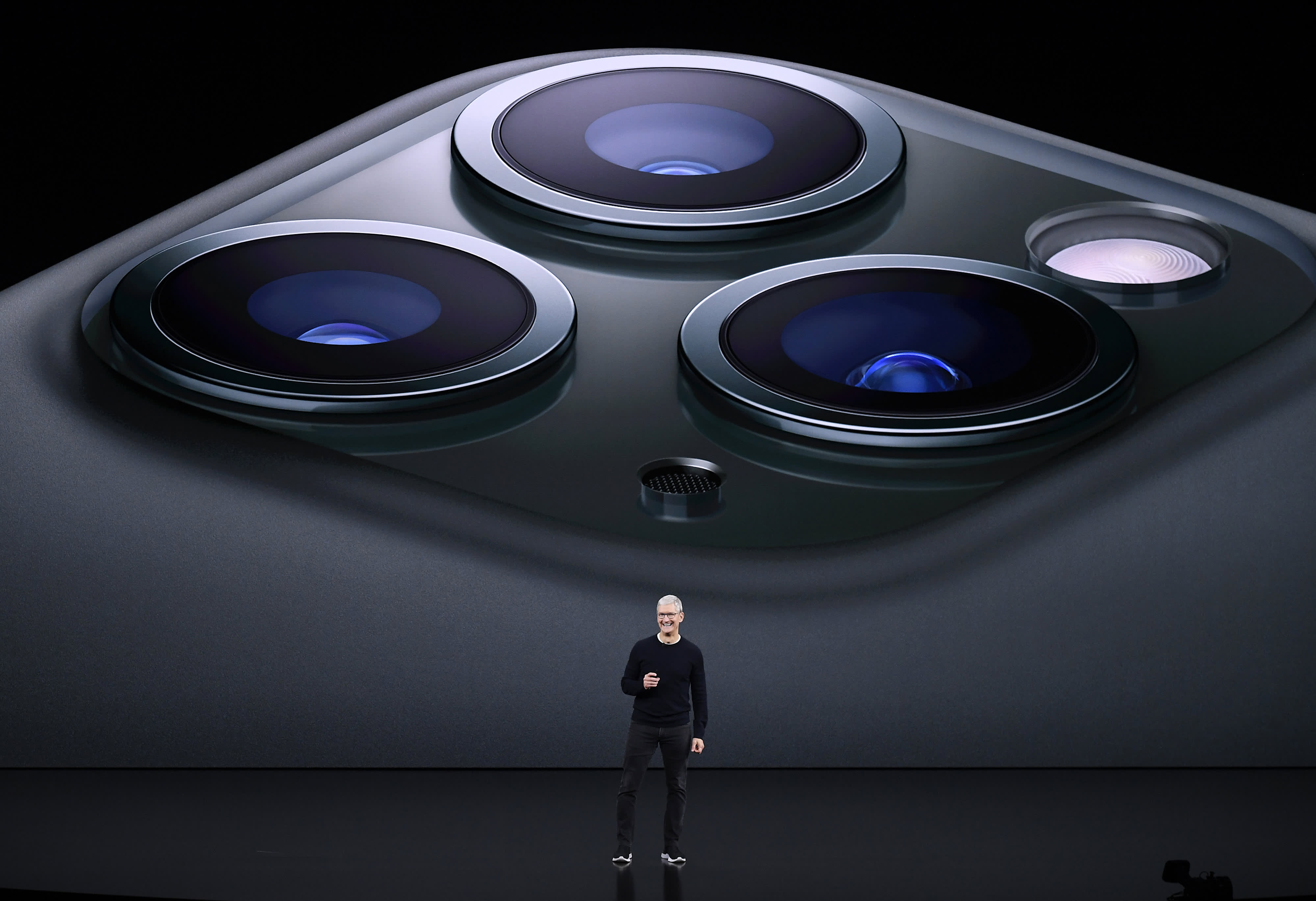Tim Cook, chief executive officer of Apple Inc., speaks about the new iPhone Pro during an event at the Steve Jobs Theater in Cupertino, California, U.S., on Tuesday, Sept. 10, 2019. Apple unveiled the iPhone 11 that will replace the XR and start at $699. Photographer: David Paul Morris/Bloomberg via Getty Images
David Paul Morris | Bloomberg | Getty Images
Apple‘s historically strong pricing power might be slipping, according to Barclays.
In an effort to grow its subscriber base for its services business, Apple has been selling iPhones with lower prices. Those prices may be too low and too many consumers may be gravitating toward the cheaper options. Barclays expects ths trend to “remain weak.”
“IPhone revenues were in-line, but we believe ASPs [average selling prices] were weaker,” said Barclays IT hardware analyst Tim Long in a note to clients on Thursday. The note was titled, “Services Strength Masks ASP Pressure.”
.1572520258493.jpeg)
Shares of Apple rose more than 1% after reporting better-than-expected third quarter earnings and revenue, despite a drop in iPhone sales. The Tim Cook-led technology giant posted earnings of $3.03 per share on revenue of $64 billion. Wall Street was expecting earnings of $2.48 per share on revenue of $62.99 billion, according to Refinitiv. The results got a boost from strong demand for iPads and AirPods as well as growth in Apple’s services business.
IPhone revenues came in at $33.36 billion, slightly higher than the $32.42 billion estimate, but Long said the average selling price of Apple’s iPhones will drop 10% year-over-year in the fourth-quarter. The firm now estimates a 12% average selling price decline in 2019 and a 6.5% average selling price decline in 2020.
Apple released three new iPhones in September: the iPhone 11, iPhone 11 Pro and iPhone 11 Pro Max. The iPhone 11 starts at $699, $50 cheaper than last year’s iPhone XR. The lower prices were supposed to attract and larger scope of customers to Apple’s services business.
Long was originally bullish on Apple’s lower pricing strategy. He said “the lower price points are helping Apple after a few challenging quarters.” But he didn’t realize average prices would come in this low as more consumers go for the cheaper phones.
“We have discussed the mix down in iPhones that has been occurring all year,” said Long. ”ASP [was] worse than our model.”
Barclays has an equal weight rating on the stock and slightly raised Apple’s price target to $236 per share to $224 per share, which is lower than the $243.26 per share Apple closed at on Wednesday.
The company could also see rising costs if a U.S.-China trade deal falls apart, squeezing margins further, investors fear.
“We still see pressure on the iPhone business, and believe that supply chain data may start turning over the next month as compares get more challenging,” said Long.
Some analysts are bullish on the prospect of new 5G iPhones set to be released next year, but Long doesn’t think Apple will be able to charge enough without hurting demand.
The lower pricing trend “may present challenges for 5G, which we believe will carry at least $150 higher ASP,” he noted.
Apple shares are up 1.5% in premarket trading on Thursday.
—with reporting from CNBC’s Michael Bloom.
